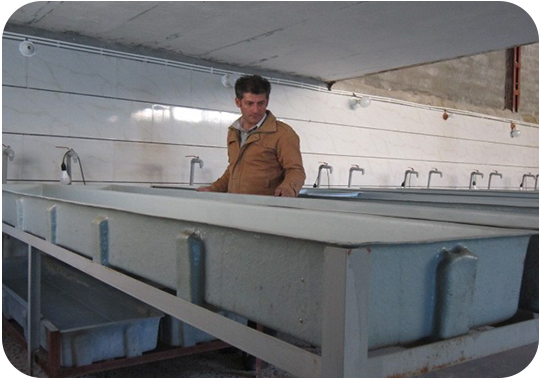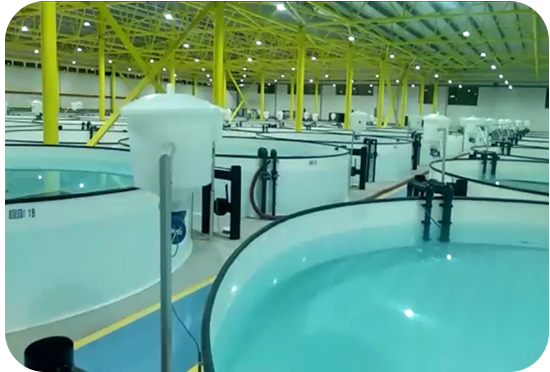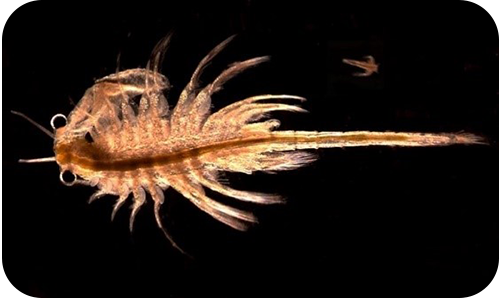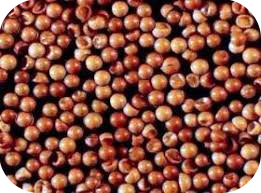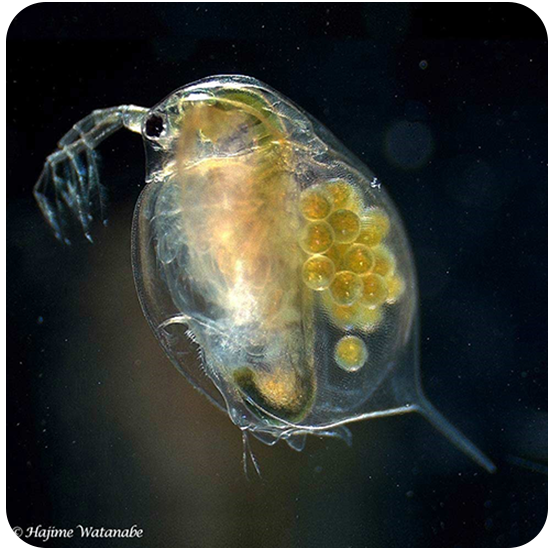Larval breeding
In this section, one-day-old larvae with yolk sacs hatched in the incubation section were raised to 80-100 mg New born baby stage. Fiberglass ponds were used for breeding larvae at two and a half meters in depth.
According to the production plan in this section, an estimated nineteen fifty thousand laurels will be produced, with a 75% survival rate of seven hundred and twelve thousand one hundred and eighty-eight hundred and eighty-nine-year-old Norway fish weighing 80 to 100 mg. 12,000 larvae are considered. So around 60 pools and power are needed. The ponds are located beneath a 500-square-foot node with a filtration system.
The water requirement for the basin at the peak was 1 liter per second for each of the five pools per second. According to the required basins, the discharge rate for this basin was 12 liters per second for a maximum of 3 weeks.
Finger size fish breeding ponds
The baby fish produced in the sector and power are transported to this sector 712,500 for breeding up to 3 grams. In this section, concrete ponds with a diameter of 4 meters and a depth of one meter and a Depth of drainage one and a half meters are used.
The stocking density of the fish in this section at the end of the period is 500 pcs / m2 so we need to produce 500,000 pcs of 3 g fish to 1000 sqm of feed space, which is 80 ponds in size. . The water consumption in these ponds was 0.7 liters per second, with a total water requirement of 56 liters per second for one month.
Live Food Production Division
Calculate Daphnia amount and consumption system
Larval weight after hatching 50 mg
The larval weight of the new born fish at the end of preliminary breeding time was 150 mg
Weight gain 100 mg
Daphnia conversion factor 6
Napolius Artemia conversion factor 4
Of the 100 mg of weight gain 40 mg is related to Artemia and 60 mg to Daphnia nutrition which results in:
The amount of Daphnia needed for a slice of larvae was 60 × 6 = 360
The amount of Artemia cyst required for one larval patch was 40 × 4 = 160
The number of larvae required per section and force is based on the production of 500,000 Beluga of 1135,000 pieces.
Total Daphnia required weight 1135000 × 360 = 410
Total weight of Artemia cyst required 1135000 × 160 = 182
Explanation that for the stages of adaptation of baby fish from live feed to synthetic feed, it is necessary to feed at a concentration of 100 to 150 mg with a mixture of live feed in the concentrate and gradually to concentrate up to 150 mg.
To produce this amount of Daphnia, 2 bushels of 0.2 hectares of soil with an average depth of 1 meter is expected. Of course, if you use high quality starter feed you can eliminate the Daphnia production section, but the use of nauplii Artemia in the early stages of feeding the sturgeon larvae is crucial.
It is also used to produce nauplius Artemia according to soft hatch 2 g / l 800 g cysts per 400 liter zook per two weeks time of feeding larvae in the ponds of Veniro using Napolius Artemia average cyst intake per day. It will be as follows:
Consumption of cysts per day 182 ÷ 15 = 12 kg given time required for any cysts which is approximately 24 – 25 hours.
This requires about 15 zuk of 400 liters.
The daily discharge of Artemia salon is about 0.07 liters / 0.07 8 6000 = 400.
The Artemia Hall has a heating system such as a heater as well as a wall-mounted water heater to heat the water needed for the zooks to provide the required temperature when hatching. The area is approximately 75 square meters.

